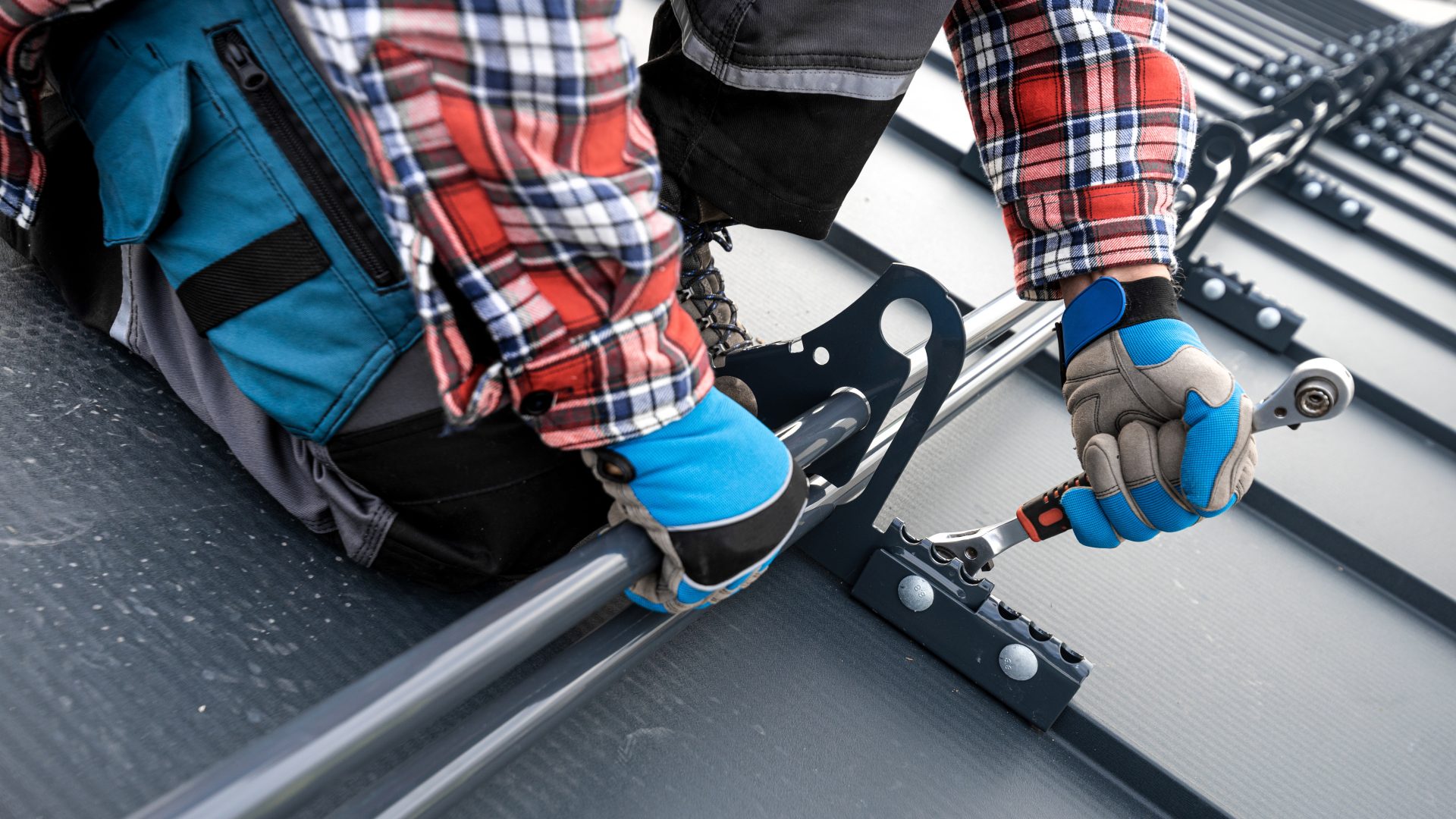
How well does your roof handle snow? In Alberta, we are no strangers to heavy snowfall and high winds that can result in snow avalanches, or roof collapses. While a higher-pitched roof can help to avoid leaks, the incline is not your friend when it comes to metal roofs. So how do you stop the risk of falling snow? The answer: metal roof snow guards. In this blog, we will dive into roofing requirements in Alberta to help protect your home this winter, how snow guards work, and our top three things to consider when installing snow guards so you are equipped with the knowledge to make the best decision for your roof.
How much snow can a roof hold in Canada?
Ever wonder what the load capacity is of your roof? Due to heavy yearly snowfall amounts, Alberta requires each roof to hold a minimum of 22 pounds or at least 4.5 feet of snow drifts. High winds, snow type and the slope of your roof can impact the amount of snow it can hold, but the effects of ignoring the rooftop snow can be devastating. If left untouched, a build-up of heavy snow on your roof can result in ice dams or new leaks as the snow melts, ultimately leading to a collapsing roof. As a precaution, clearing off the rooftop snow, keeping roof drains clear and avoiding creating snow piles against downspouts are some easy steps that you can take to protect your roof. If you want to take your winter safety to the next level, you can also consider the use of snow guards.
How do roof snow guards work?
Snow guards, also known as snow rails or snow brakes, help to control how snow falls off your roof more predictably. Rather than fearing the sudden fall of heavy sheets of snow on a sloped roof, a snow guard retention system works to evenly distribute the weight of snow and ice. You will find them most commonly used on residential and commercial buildings with sloped metal roofs due to the slippery nature of the metal. Contrary to popular belief, snow guards do not cause ice dams, but rather they hold the snow in place to assist in the melting process.
Some of the benefits of snow guards include:
- Reduced maintenance costs to gutters, skylights, and lower roofs
- Safeguard your landscaping, vehicle, and equipment
- Increased protection from above for people and animals by preventing injuries caused by falling snow and ice chunks
- Long-term protection for your roof by avoiding cracking and leaks
- Increased property value by highlighting a special feature on your roof
- Reduced liability from injury claims
Where should snowguards be placed on a metal roof?
The type of snow guard will dictate its placement on the roof due to its size and length. As a rule of thumb, snow guards should be positioned on the lower half of the roof in a single line or multiple rows. Low-profile snow guards are less than 4 inches in length and are less noticeable as compared to large-profile snow guards sized 15 inches or more. While large profile snow guards can be staggered, each kind should be placed 1 to 2 feet from the eavestrough.
Do you need snow guards on a metal roof?
Snow guards are not necessary for shingled roofs unless the pitch of the roof makes it more susceptible to snow avalanches. If the steep of your roof is higher than 6/12 pitch and your geographical location is more prone to heavier snowfalls, we recommend installing snow guards. If you have a metal roof, we recommend you install snow guards. Metal roofs are more slippery than shingles, but the controlled flow of snow can also help you avoid a cave-in.
How to install snow guards on a metal roof: Our best practices
The best time to install snow guards is during fall maintenance once your roof has been inspected for roof leaks, cracking, or other signs of damage. Your choice of snow guard should be based on: the roof pitch, guard style, snow load, and roof length. Each snow guard should be attached to a cross-member, and we recommend staggering the snow guards.
3 things to consider when installing snow guards
- Choose the right fastening: Snow guards can be installed as a glue-on option or clamps. We recommend installing with clamps as they are more likely to hold season to season and are faster to install. Ensure that the fastener of choice does not damage the metal coating on the panel or puncture your roof.
- Avoid low-quality materials: Metal roofs are designed to last from 40 to 70 years if properly installed. Snow guards can be made out of plastic, copper, aluminum or steel. While plastic snow guards are the most cost-effective, they will only last a few years. Copper snow guards are the most expensive option but will last a lifetime. We recommend choosing aluminum or steel snow guards for their fair pricing and lifespan of over 50 years.
- Weight capacity: Steel or copper snow guards can withstand over 300 kg per snow guard bracket. Bar-style snow guards can support more weight as it is spread more evenly throughout the bar. Depending on the pitch of your roof and the average annual snowfall in your area, you may need multiple rows of snow guards to support the weight.
Is your roof ready for winter? Our team of experts at Knights Roofing is here to help with customized recommendations for your roof and your needs. Stay ahead of the snow this year when you book your snow removal services to protect your roof from collapsing. For more information on how you can protect your roof this winter, check out our essential tips for preventing winter roof leaks. Contact us today for a free estimate and transform your roof with protection from above.
